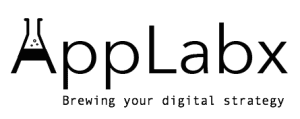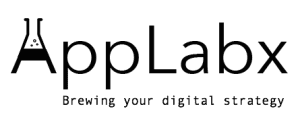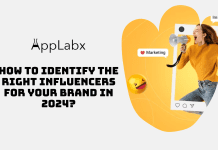Key Takeaways
- Video marketing in 2025 is essential for small businesses to boost visibility, engagement, and conversions across digital platforms.
- Leveraging AI, vertical formats, and interactive content is key to staying competitive and capturing audience attention.
- A strategic approach that includes planning, SEO optimisation, and performance tracking ensures long-term video marketing success.
In 2025, video marketing is no longer a luxury or a trend—it’s a necessity. As digital ecosystems continue to evolve at a rapid pace, small businesses must adapt to remain competitive and relevant. With consumers increasingly drawn to engaging, visual, and interactive content, video has become the most powerful and persuasive format for capturing attention, building trust, and driving conversions. Whether on social media platforms like TikTok and Instagram Reels or on websites and email campaigns, video content has proven to outperform static images and text in nearly every marketing metric that matters.

The surge in smartphone usage, improved internet speeds, and the proliferation of user-friendly video creation tools have all democratized access to video production. No longer do small businesses need massive budgets or professional film crews to create compelling content. From explainer videos to customer testimonials and behind-the-scenes clips, small business owners now have the opportunity to tell their brand stories in authentic, impactful ways that resonate with modern audiences. Video marketing has become the great equalizer, empowering local startups and niche businesses to compete with larger, more established brands on a level playing field.
Moreover, video content now plays a vital role in SEO and digital discoverability. Google increasingly prioritizes video-rich content in search results, and platforms like YouTube—now the second-largest search engine in the world—have become essential channels for reaching potential customers. Social media algorithms also heavily favor video, especially short-form vertical content optimized for mobile devices. In 2025, small businesses that incorporate strategic video marketing into their growth plans stand to gain increased visibility, higher engagement, and better customer retention rates.
However, with new opportunities come new challenges. The video landscape is more crowded than ever, making it critical for small businesses to stand out with high-quality, relevant, and value-driven content. Trends like AI-generated video personalization, shoppable videos, interactive experiences, and vertical-first mobile strategies are shaping the future of video marketing. Understanding these developments and knowing how to apply them effectively is key to building a successful video strategy in today’s digital-first economy.
This comprehensive guide is designed to equip small business owners, marketers, and entrepreneurs with the insights, tools, and actionable strategies they need to master video marketing in 2025. From choosing the right video formats and platforms to optimizing content for SEO and analyzing performance metrics, this guide will walk you through everything you need to know to create a winning video marketing campaign that delivers measurable results.
Whether you’re just getting started or looking to level up your current video efforts, this guide will serve as your roadmap to navigating the fast-moving world of video marketing. By the end, you’ll not only understand why video is essential for small business success in 2025—you’ll also be ready to create impactful video content that connects, converts, and grows your brand.
But, before we venture further, we like to share who we are and what we do.
About AppLabx
From developing a solid marketing plan to creating compelling content, optimizing for search engines, leveraging social media, and utilizing paid advertising, AppLabx offers a comprehensive suite of digital marketing services designed to drive growth and profitability for your business.
At AppLabx, we understand that no two businesses are alike. That’s why we take a personalized approach to every project, working closely with our clients to understand their unique needs and goals, and developing customized strategies to help them achieve success.
If you need a digital consultation, then send in an inquiry here.
The Ultimate Guide to Video Marketing for Small Businesses in 2025
- What is Video Marketing?
- Why Video Marketing Matters for Small Businesses in 2025
- Video Marketing Trends in 2025
- Types of Videos Small Businesses Should Use
- How to Plan a Successful Video Marketing Strategy
- Best Platforms for Video Marketing in 2025
- Budgeting for Video Marketing as a Small Business
- Tools and Software for Video Creation in 2025
- How to Optimise Videos for SEO
- Promoting Your Video Content
- Measuring the Success of Your Video Campaign
- Common Mistakes to Avoid in Video Marketing
- Future of Video Marketing Beyond 2025
1. What is Video Marketing?
Video marketing refers to the strategic use of video content to promote a product, service, or brand with the objective of increasing engagement, driving conversions, and improving customer education and retention. In 2025, video has become the most dominant content format across all digital platforms, offering unparalleled opportunities for small businesses to connect with their audiences in dynamic and memorable ways.
The Evolution of Video Marketing
From Traditional Broadcast to Digital Dominance
- Pre-2010s: TV commercials and in-store displays dominated traditional video marketing.
- 2010–2018: Rise of YouTube, Facebook video, and early Instagram video clips changed how brands communicate.
- 2019–2022: TikTok, Instagram Reels, and stories revolutionized short-form video and vertical content.
- 2023–2025: AI video tools, interactive videos, and mobile-first strategies become mainstream for small businesses.
Shift in Consumer Behavior
- 86% of consumers now prefer video content over text for learning about a product or service (source: Wyzowl, 2025).
- People retain 95% of a message when watched in video format versus only 10% when read as text.
Key Components of Video Marketing
Core Objectives
- Brand Awareness: Introduce your business to new audiences through compelling brand story videos.
- Engagement: Spark emotional connections through relatable, humanized content.
- Conversions: Use product demos, testimonials, and explainer videos to drive purchases.
- Retention: Deliver value through tutorials, webinars, and post-sale content to keep users loyal.
Video Marketing Funnel Alignment
| Marketing Funnel Stage | Video Type | Purpose | Example |
|---|---|---|---|
| Awareness | Brand Story, Explainer | Introduce business and offerings | “About Us” video on homepage or YouTube ad |
| Consideration | Product Demos, Testimonials | Showcase benefits and social proof | Side-by-side comparison video of features |
| Decision | FAQ Videos, Offer Promos | Encourage conversions with answers and value | “Limited-time deal” video ad on Instagram |
| Retention | Tutorials, How-To Guides | Provide ongoing value post-purchase | Email-embedded video tutorial on product usage |
| Advocacy | User-Generated Content, Reviews | Encourage sharing and recommendations | Customer review reposted on TikTok with branding |
Popular Video Formats for Small Business Use
Short-form Videos (15–60 seconds)
- Ideal for: TikTok, Instagram Reels, YouTube Shorts
- Purpose: Drive quick engagement, ideal for product teasers or promotions
- Example: A 30-second sneak peek of a new cafe menu or product unboxing
Explainer Videos (60–120 seconds)
- Ideal for: Landing pages, email campaigns, YouTube
- Purpose: Explain a product/service clearly and persuasively
- Example: Animation that breaks down how a SaaS product solves a common business pain point
Live Streams
- Ideal for: Facebook, Instagram, LinkedIn
- Purpose: Real-time interaction with audiences, Q&A sessions, product reveals
- Example: A fashion boutique live-streaming a new collection launch
Tutorials and How-To Videos
- Ideal for: YouTube, help centers, email onboarding
- Purpose: Educate customers post-purchase, improve satisfaction and retention
- Example: A home appliance company showing how to clean and maintain a product
Benefits of Video Marketing for Small Businesses
| Benefit | Description |
|---|---|
| Higher Engagement Rates | Video content receives 2x–3x more engagement on social platforms. |
| Improved SEO | Embedding videos increases dwell time and decreases bounce rates on websites. |
| Increased Conversions | Landing pages with videos can boost conversions by up to 80%. |
| Stronger Brand Recall | Video aids memory retention and brand recognition. |
| Mobile Accessibility | Videos are easily consumed on smartphones—perfect for mobile-first audiences. |
| Trust and Credibility | Real customer testimonials build authentic brand trust. |
Example: Video Marketing in Action – A Local Bakery
| Video Type | Execution Example | Platform | Goal |
|---|---|---|---|
| Brand Story | A behind-the-scenes video showing daily bakery operations | YouTube, Homepage | Build brand identity |
| Product Demo | A video showing how a signature pastry is prepared | Instagram Reels | Showcase product appeal |
| Testimonial | A customer sharing why they love the bakery’s seasonal menu | Facebook Video | Social proof and loyalty marketing |
| Tutorial | “How to decorate cupcakes like a pro” video with bakery products | YouTube, TikTok | Engagement and educational value |
| Promo Video | A short ad highlighting a weekend discount or loyalty card program | Instagram, Stories | Drive immediate action and foot traffic |
Conclusion
Video marketing in 2025 is not just a tactic—it is a full-funnel, ROI-driven strategy that small businesses must embrace. Whether you’re selling handmade crafts, offering consulting services, or running a local café, video allows you to connect with customers where they are, how they like to consume content, and in the format they remember most.
Up next, this guide will cover why video marketing is especially crucial for small businesses in 2025, including current trends and future-proof tactics to stay ahead.
2. Why Video Marketing Matters for Small Businesses in 2025
In 2025, video marketing has evolved into a foundational element of digital strategy for small businesses. With advancements in mobile technology, AI-powered video creation tools, and algorithmic prioritization of video content on nearly every major platform, video has become the most efficient and effective way for small enterprises to compete, connect, and convert in the digital economy.
Changing Consumer Behavior in the Digital Age
Video is the Preferred Content Format
- 91% of consumers say they want to see more online videos from brands in 2025 (source: Wyzowl).
- Viewers retain 95% of a video message compared to 10% from text.
- Video content is 53x more likely to rank on the first page of Google than text-based pages (source: Forrester).
Short Attention Spans Require Engaging Formats
- The average user attention span is now under 8 seconds.
- Short-form videos (under 60 seconds) generate the highest engagement rates across social platforms.
- Platforms like TikTok, YouTube Shorts, and Instagram Reels thrive due to their digestible, visual content.
Competitive Advantages for Small Businesses
1. Cost-Effective Visibility
- Organic video reach is significantly higher than that of static posts.
- Small businesses can compete with larger brands using low-budget, authentic content.
- Examples:
- A home-based candle shop uses TikTok to showcase DIY-making processes and reaches over 500K views.
- A neighborhood pizzeria posts daily Instagram Reels of their pizza-making process, increasing walk-in traffic by 35%.
2. Stronger Brand Personality and Storytelling
- Videos allow businesses to humanize their brand and share their values.
- Behind-the-scenes clips and founder stories create emotional connections.
- Video storytelling builds customer trust and brand loyalty over time.
3. Increased Conversion Rates
- Landing pages with videos can increase conversion rates by up to 80%.
- Product demo videos reduce purchase hesitation by giving a clear visual of benefits.
- Example: An e-commerce skincare brand uses 15-second Instagram Reels to highlight product benefits, leading to a 2.3x higher CTR.
Impact of Video Across the Customer Journey
| Funnel Stage | Video Type | Customer Impact | Example |
|---|---|---|---|
| Awareness | Brand Intro, Short Ads | Capture attention, build curiosity | Local coffee shop runs YouTube pre-roll ad to target users nearby |
| Consideration | Testimonials, Comparisons | Build trust, answer questions | Fitness coach shares before/after client videos on Instagram |
| Decision | Product Demos, Offer Explainers | Drive direct conversions | SaaS startup uses animated video to explain pricing tiers |
| Retention | Tutorials, Onboarding Guides | Improve satisfaction, reduce churn | Cleaning service emails video guide on “how to prep for visits” |
| Advocacy | User-Generated, Reviews | Encourage sharing, build social proof | Boutique reposts customer try-on videos to boost reach |
Boost in SEO Performance
How Video Enhances Search Visibility
- Increases dwell time on web pages, signaling high content value to search engines.
- Video-rich snippets improve CTR in search engine results pages (SERPs).
- Embedding keyword-optimized YouTube videos supports backlink generation and discoverability.
Video and Local SEO
- Geo-tagged video content improves visibility in local search results.
- Video testimonials featuring local customers strengthen community engagement.
YouTube as a Search Engine
- YouTube is the world’s second-largest search engine.
- Businesses with branded YouTube channels benefit from evergreen visibility and cross-platform traffic.
Platform Algorithm Prioritization of Video in 2025
| Platform | Video Priority in Feed (2025) | Recommended Content Type | Example |
|---|---|---|---|
| TikTok | Extremely High | Short-form, entertaining, trendy | Restaurant shows “1-minute recipe hacks” |
| Instagram Reels | Very High | Fast-paced, branded short clips | Florist shares flower arrangement process |
| YouTube | High | Tutorials, vlogs, product demos | Real estate agent gives video tours of listings |
| Moderate | Live video, customer stories | Auto repair shop livestreams “Ask the Mechanic” Q&A | |
| Increasing | Educational, thought leadership | HR consultant shares recruitment tips via animated shorts |
Customer Expectations in 2025
| Expectation | How Video Meets It |
|---|---|
| Fast, digestible content | Short-form and vertical video delivers information quickly |
| Authenticity and relatability | Behind-the-scenes and unfiltered content builds real connections |
| Personalized experiences | AI-generated personalized video greetings and offers |
| Multi-platform engagement | Cross-posted video content increases brand consistency |
| Mobile-first consumption | Vertical video formats dominate smartphone user behavior |
Examples of Real-World Small Business Video Success
Case Study 1: Local Fitness Trainer
- Strategy: Daily Instagram Reels featuring simple home workouts.
- Result: Grew follower base from 2,000 to 45,000 in six months.
- Impact: Doubled online coaching clients and built a digital product line.
Case Study 2: Artisan Jewelry Brand
- Strategy: Behind-the-scenes TikToks showing handmade crafting process.
- Result: One viral video reached 1.3M views.
- Impact: Sold out entire inventory in 72 hours and gained national media attention.
The ROI of Video Marketing in Numbers
| Metric | Performance Boost from Video |
|---|---|
| Website Dwell Time | +88% increase |
| Social Media Engagement | 2x–3x higher than non-video posts |
| Email Open Rate (with video) | +19% |
| Email CTR (with video) | +65% |
| Conversion Rate on Landing Pages | Up to +80% |
| Customer Retention with Tutorials | +50% |
Conclusion
Video marketing in 2025 offers small businesses a high-impact, low-barrier opportunity to compete in a saturated digital market. It serves as a multifaceted tool for storytelling, trust-building, lead generation, SEO performance, and brand retention. With customers demanding faster, more authentic, and engaging interactions, video allows businesses to meet those expectations while optimizing for growth, visibility, and revenue.
The next section will explore emerging video marketing trends that small businesses must watch in 2025 to stay relevant and ahead of the curve.
3. Video Marketing Trends in 2025
In 2025, video marketing continues to be a driving force in digital strategies for businesses of all sizes. The rapid evolution of consumer preferences, AI-powered creation tools, and social media algorithms has transformed how video content is produced, distributed, and consumed. Small businesses that embrace these emerging trends will gain a significant competitive advantage in visibility, engagement, and conversion rates.
1. Short-Form Vertical Videos Dominate Attention
Why It Matters
- Short videos under 60 seconds now account for over 70% of all video views on social platforms.
- Designed for mobile-first consumption and fast browsing behavior.
- Vertical format fits modern screen orientation, eliminating friction for user engagement.
Platform Preferences
| Platform | Preferred Video Length | Optimal Format | Engagement Trend (YoY) |
|---|---|---|---|
| TikTok | 15–60 seconds | Vertical | +23% |
| Instagram Reels | 15–30 seconds | Vertical | +19% |
| YouTube Shorts | Up to 60 seconds | Vertical | +27% |
| Facebook Stories | 15 seconds | Vertical | +14% |
Example
- A local pet grooming service uses 30-second TikTok clips showing “Before and After” pet grooming transformations, gaining over 500,000 organic views with no ad spend.
2. AI-Powered Video Creation and Editing
Emerging Tools
- Tools like Pictory, Synthesia, Runway, and Descript allow small businesses to:
- Auto-generate videos from blog content or scripts.
- Use text-to-video and AI avatars for explainer videos.
- Instantly edit scenes via text commands.
Advantages for Small Businesses
- Reduces production time by up to 70%.
- Enables professional-quality videos without needing in-house editing expertise.
- Supports multilingual content with AI voiceovers and subtitles.
Example
- A language tutoring startup uses Synthesia to produce personalized course intros in five languages, helping them expand into international markets with localized content.
3. Shoppable Video Experiences
What It Is
- Videos embedded with direct purchase links or interactive product showcases.
- Seamlessly merges content with commerce to shorten the buyer journey.
Benefits
- Boosts impulse purchases by integrating call-to-action within the video.
- Tracks user interactions with clickable elements for deeper analytics.
Use Case Matrix
| Industry | Shoppable Video Example | Conversion Boost |
|---|---|---|
| Fashion Retail | Try-on haul videos with product tags | +32% |
| Skincare Brands | Product application tutorial with “Buy Now” buttons | +27% |
| Home Decor | Room tours with clickable furniture and decor links | +25% |
| Food & Beverage | Recipe videos with ingredients tagged for purchase | +18% |
Example
- A boutique clothing store uploads Instagram Reels featuring seasonal outfits with integrated Shopify links, increasing daily online sales by 40%.
4. Interactive and Gamified Video Content
What’s Trending
- Polls, quizzes, live comments, and embedded forms in video content.
- Increases time-on-video and boosts engagement rates significantly.
Benefits
- Enhances viewer participation and feedback.
- Delivers personalized content paths based on user responses.
Example
- A real estate agency offers an interactive virtual home tour where viewers choose which room to explore next, resulting in a 65% higher completion rate compared to standard walk-through videos.
5. Data-Driven Video Personalization
AI + CRM Integration
- Video platforms now integrate with customer data to create hyper-personalized experiences.
- Custom intros using the viewer’s name.
- Dynamic content based on location, behavior, or previous interactions.
Benefits
- Increases email open rates and click-through rates.
- Strengthens customer relationships with tailored messaging.
Example
- A financial services provider sends out automated video account summaries tailored to each client, boosting email CTRs by over 80%.
6. Multi-Platform Video Distribution Strategy
Cross-Channel Optimization
- In 2025, successful video marketing requires multi-platform tailoring:
- Same video concept is edited for YouTube, TikTok, Instagram, and LinkedIn.
- Each platform receives native-optimized formats, dimensions, and CTA placements.
Comparison Table
| Platform | Video Format | Max Duration | Ideal CTA | Best Time to Post |
|---|---|---|---|---|
| YouTube | Horizontal | 15 min+ | Subscribe / Learn More | Weekdays 5–7 PM |
| TikTok | Vertical | 60 sec max | Follow / Shop Now | Daily 6–10 PM |
| Instagram Reels | Vertical | 90 sec max | Visit Link / Message | Weekdays 11 AM–2 PM |
| Square/Horizontal | 30–120 sec | Download Guide / Contact | Tues-Thurs 9–11 AM |
7. UGC (User-Generated Content) and Influencer Collaboration
UGC Growth
- Viewers trust real people more than branded commercials.
- UGC videos shared by customers lead to 4x higher click-through rates.
Influencer Micro-Collaboration
- Small businesses now partner with nano-influencers (1K–10K followers) for:
- Cost-effective, localized reach.
- Higher engagement due to niche communities.
Example
- A family-run café collaborates with a local food vlogger to showcase their menu in a YouTube short, leading to a 200% spike in weekend visits.
8. Silent Videos with Captions
Silent Video Optimization
- 85% of videos on social media are watched without sound.
- Captions and on-screen text are now essential for engagement and accessibility.
Best Practices
- Auto-caption every social video.
- Use branded fonts and color schemes to maintain consistency.
- Add animated subtitles for visual emphasis.
Example
- A digital agency posts Facebook videos with kinetic text overlays and branded captions, resulting in a 2.4x increase in view duration.
9. Sustainability and Authenticity in Video Messaging
Audience Expectation
- Consumers are increasingly drawn to brands that demonstrate:
- Ethical sourcing
- Social responsibility
- Environmental sustainability
How Video Helps
- Documentaries, behind-the-scenes clips, and CSR storytelling allow brands to:
- Show—not just tell—their values.
- Build emotional resonance and brand loyalty.
Example
- An eco-friendly shoe brand shares a mini-documentary of their recyclable production process on YouTube, generating over 1 million views and 25K new subscribers.
Conclusion
The video marketing landscape in 2025 is defined by personalization, platform-specific strategies, and immersive, mobile-first formats. Small businesses that keep pace with trends like AI-assisted creation, interactive videos, and shoppable experiences are better positioned to captivate modern consumers and achieve scalable growth. Whether it’s a 15-second TikTok or a personalized AI-generated onboarding video, the key lies in strategic, value-driven execution.
In the next section, this guide will explore the most effective types of videos small businesses should focus on in 2025, aligned with specific business goals and audience needs.
4. Types of Videos Small Businesses Should Use
Choosing the right type of video is critical to the success of any small business video marketing strategy. In 2025, video content must be not only engaging but also strategically aligned with specific marketing goals, target audiences, and funnel stages. Each video type serves a different purpose—whether to inform, inspire, convert, or retain customers. Below is a comprehensive guide to the most impactful video formats small businesses should leverage in 2025.
1. Explainer Videos
Purpose
- Simplify complex products, services, or processes.
- Capture attention at the top of the funnel and educate prospects quickly.
Key Features
- Length: 60–120 seconds
- Formats: 2D animation, live-action with voiceover, whiteboard style
- Placement: Homepage, landing pages, YouTube, onboarding emails
Benefits
- Improves understanding and boosts conversion rates
- Reduces customer support queries by addressing common questions
Example
- A fintech startup creates a 90-second animated explainer showing how their app automates personal budgeting.
Explainer Video Performance Stats
| Metric | Average Performance |
|---|---|
| Completion Rate | 72% |
| Conversion Lift | +35% |
| Bounce Rate Reduction | -25% |
2. Product Demonstration Videos
Purpose
- Showcases how a product works in real-life scenarios
- Builds trust by visualizing features, benefits, and use cases
Key Features
- Length: 1–3 minutes
- Formats: Hands-on walkthrough, feature-focused demo, unboxing
- Placement: Product pages, YouTube, Amazon listings, email campaigns
Benefits
- Increases buyer confidence
- Reduces return rates and abandoned carts
Example
- A skincare brand uses a video to demonstrate proper usage of a night serum, integrated with “Buy Now” CTAs on Instagram Reels.
Conversion Comparison Table
| Without Video | With Demo Video |
|---|---|
| Conversion Rate: 2.1% | Conversion Rate: 4.8% |
3. Customer Testimonial Videos
Purpose
- Leverage real customer stories to build credibility and social proof
Key Features
- Length: 30–90 seconds
- Formats: Interview-style, self-recorded, case study montage
- Placement: Website testimonials section, social proof ads, LinkedIn
Benefits
- Enhances trust and relatability
- Improves brand authority through authentic narratives
Example
- A coaching consultant posts short videos of entrepreneurs discussing how her service helped them grow revenue by 30%.
4. Behind-the-Scenes (BTS) Videos
Purpose
- Humanizes the brand by revealing the team, culture, and process
Key Features
- Length: 30 seconds–2 minutes
- Formats: Day-in-the-life, workshop walkthroughs, team introductions
- Placement: Instagram Stories, TikTok, LinkedIn, YouTube
Benefits
- Builds emotional connections with audiences
- Encourages transparency and authenticity
Example
- A boutique coffee shop films a BTS video showing how beans are sourced and roasted, boosting social media engagement by 4x.
5. Educational and Tutorial Videos
Purpose
- Deliver high-value content to nurture trust and improve customer satisfaction
Key Features
- Length: 2–10 minutes
- Formats: Step-by-step guides, FAQ walkthroughs, expert tips
- Placement: YouTube, blog content, customer onboarding emails
Benefits
- Positions your brand as a helpful authority
- Reduces post-sale friction and enhances loyalty
Example
- A craft supply store creates a “How to make a DIY scrapbook” video series, generating 70% of its YouTube traffic from how-to keywords.
SEO Impact of Tutorial Videos
| Metric | Increase with Tutorials |
|---|---|
| Organic Traffic | +62% |
| Avg. Time on Page | +4.2 minutes |
| Email Open Rate (w/ video) | +19% |
6. Live Streaming Videos
Purpose
- Enable real-time interaction with audiences for Q&As, product launches, or live sales
Key Features
- Length: 10–60 minutes
- Platforms: Instagram Live, Facebook Live, LinkedIn Live, TikTok Live
- Formats: AMA sessions, product reveals, events, expert panels
Benefits
- Drives immediacy and urgency
- Increases trust through unedited, real-time dialogue
Example
- A local clothing retailer hosts a weekly Instagram Live “Live Try-On Sale,” offering limited-time discounts, doubling sales during live sessions.
7. Brand Story Videos
Purpose
- Share the mission, values, and journey behind the business to inspire and connect
Key Features
- Length: 1–3 minutes
- Formats: Documentary-style, founder interviews, community-driven stories
- Placement: Homepage, about page, YouTube, press kits
Benefits
- Builds long-term brand equity
- Appeals to emotion and brand loyalty
Example
- A sustainable footwear brand narrates its origin story and commitment to eco-friendly materials, increasing repeat customer rate by 22%.
8. Event Recap and Promo Videos
Purpose
- Showcase past events or promote upcoming webinars, launches, or meetups
Key Features
- Length: 30–90 seconds
- Formats: Highlight reels, speaker clips, testimonials
- Placement: Event landing pages, social media ads, emails
Benefits
- Boosts attendance and builds excitement
- Repurposes content for future marketing
Example
- A tech startup creates a highlight video of its product demo day and uses it in retargeting campaigns, reducing ad CPC by 38%.
9. User-Generated Content (UGC) Videos
Purpose
- Encourage customers to share their own experiences and perspectives
Key Features
- Length: 15–60 seconds
- Formats: Reviews, challenge responses, testimonials
- Placement: Instagram Reels, TikTok, website gallery
Benefits
- Increases authenticity and trust
- Expands brand reach through shared content
Example
- A beauty brand launches a #GlowWithUs challenge encouraging users to show before/after results, generating over 3,000 user submissions in 30 days.
10. FAQ and Support Videos
Purpose
- Answer common questions visually to support customer service and reduce friction
Key Features
- Length: 1–2 minutes per video
- Formats: Screen recordings, face-to-camera walkthroughs, visual guides
- Placement: Help center, chatbot integrations, email
Benefits
- Saves time for support teams
- Increases customer satisfaction and retention
Example
- An e-commerce platform creates a “How to Track Your Order” video embedded in every order confirmation email, reducing support tickets by 45%.
Video Type vs. Marketing Goal Matrix
| Video Type | Goal: Awareness | Goal: Consideration | Goal: Conversion | Goal: Retention |
|---|---|---|---|---|
| Explainer Videos | ✅ | ✅ | ✅ | ❌ |
| Product Demos | ❌ | ✅ | ✅ | ✅ |
| Testimonials | ❌ | ✅ | ✅ | ✅ |
| Behind-the-Scenes | ✅ | ✅ | ❌ | ✅ |
| Educational Tutorials | ❌ | ✅ | ✅ | ✅ |
| Live Streams | ✅ | ✅ | ✅ | ✅ |
| Brand Story Videos | ✅ | ✅ | ❌ | ✅ |
| Event Promos/Recaps | ✅ | ✅ | ✅ | ❌ |
| UGC Videos | ✅ | ✅ | ✅ | ✅ |
| FAQ/Support Videos | ❌ | ✅ | ✅ | ✅ |
Conclusion
Choosing the right type of video content allows small businesses to align their messaging with each stage of the customer journey. In 2025, blending educational, entertaining, and emotionally resonant video formats will drive stronger engagement, higher conversions, and longer-lasting customer relationships. By leveraging a diverse video content strategy, small businesses can maximize ROI and build a robust, scalable digital presence.
In the next section, we will explore how to plan a successful video marketing strategy, including audience targeting, content calendars, and performance tracking.
5. How to Plan a Successful Video Marketing Strategy
A well-crafted video marketing strategy serves as the backbone of effective digital outreach in 2025. Small businesses must go beyond creating random content and instead build a strategic plan that aligns with business goals, audience needs, and digital platform dynamics. From goal setting to content distribution, each step must be intentional and data-driven to maximize ROI, engagement, and growth.
1. Define Clear Business and Marketing Goals
Start With SMART Objectives
- Specific: Clearly state what you want to achieve with video content.
- Measurable: Assign metrics to each goal (views, CTR, conversions).
- Achievable: Set realistic expectations based on resources and audience size.
- Relevant: Ensure alignment with broader business goals.
- Time-bound: Establish deadlines for each goal.
Common Video Marketing Objectives
- Increase brand awareness
- Generate qualified leads
- Improve conversion rates on landing pages
- Educate customers and reduce churn
- Boost social media engagement
Example
- Goal: Increase product page conversions by 30% using explainer videos by Q3 2025.
2. Understand and Segment Your Target Audience
Create Detailed Buyer Personas
- Demographics: Age, location, income, occupation
- Psychographics: Values, lifestyle, challenges, pain points
- Digital Behavior: Preferred platforms, content formats, watch habits
Audience Segmentation Table
| Segment | Platform Preference | Video Format | Content Tone |
|---|---|---|---|
| Gen Z Consumers | TikTok, Instagram Reels | Short-form, UGC | Fast-paced, casual |
| Millennials | YouTube, Instagram | Tutorials, Demos | Informal, value-driven |
| Professionals | LinkedIn, YouTube | Thought leadership, B2B | Educational, formal |
| Local Shoppers | Facebook, YouTube Shorts | Community stories, reviews | Authentic, relatable |
Example
- A fitness studio targets Millennials on YouTube with weekly workout tutorial videos to drive memberships.
3. Map Video Content to the Buyer’s Journey
Align Content to Funnel Stages
| Funnel Stage | Content Type | Purpose |
|---|---|---|
| Awareness | Brand stories, viral shorts | Introduce and attract new viewers |
| Consideration | Product demos, testimonials | Educate and build trust |
| Decision | Offer videos, how-tos | Motivate conversions |
| Retention | Tutorials, onboarding guides | Increase satisfaction, reduce churn |
| Advocacy | UGC, influencer collaborations | Encourage referrals and word-of-mouth |
Example
- A digital agency produces a “Behind the Brand” series for awareness, followed by a “Service Explainer” video and a client testimonial to guide viewers through the full funnel.
4. Choose the Right Platforms and Distribution Channels
Understand Platform Capabilities
- Tailor video formats, durations, and CTAs to each platform’s algorithm and user behavior.
Platform Strategy Matrix
| Platform | Best For | Recommended Video Length | Optimal CTA |
|---|---|---|---|
| YouTube | Long-form content, SEO traffic | 3–10 minutes | Subscribe / Watch Next |
| TikTok | Viral discovery, quick branding | 15–60 seconds | Follow / Click Profile Link |
| Instagram Reels | Engagement, brand visuals | 15–30 seconds | Message / Shop Now |
| Community building, local reach | 30–90 seconds | Learn More / Contact Us | |
| B2B leads, authority content | 30–120 seconds | Download / Book a Demo |
Example
- A local bakery creates Instagram Reels showing desserts being made and repurposes the content as YouTube Shorts to drive more brand visibility.
5. Develop a Content Calendar
Plan Consistency and Variety
- Ensure a mix of content types aligned with business objectives.
- Schedule according to platform posting frequency and audience habits.
Video Content Calendar Sample (Monthly)
| Week | Video Type | Platform | Primary Goal |
|---|---|---|---|
| Week 1 | Brand Intro Video | YouTube, Homepage | Awareness |
| Week 2 | Product Demo | Instagram Reels | Consideration |
| Week 3 | Customer Testimonial | Facebook, LinkedIn | Conversion |
| Week 4 | How-to Tutorial | YouTube | Retention and SEO |
Example
- A SaaS company uses Trello to map weekly content themes, production timelines, and team responsibilities for each platform.
6. Set a Realistic Video Marketing Budget
Budget Allocation Guidelines
- Content Creation: Filming, editing, animation (40–60%)
- Distribution & Ads: Paid campaigns, influencer fees (20–40%)
- Tools & Software: Subscriptions to editing and analytics tools (10–15%)
- Contingency: Unplanned needs or reshoots (5–10%)
Budgeting Table (Monthly Sample for Small Business)
| Category | Cost Estimate (USD) |
|---|---|
| DIY Production Tools | $50–$200 |
| Freelancer/Editor | $300–$700 |
| Paid Ads | $150–$500 |
| Software Subscriptions | $50–$150 |
| Total | $550–$1,550 |
Example
- A retail brand uses Canva Pro for visuals, CapCut for editing, and allocates $200 per month for Instagram and YouTube ads.
7. Script, Shoot, and Edit with Purpose
Scripting Tips
- Hook viewers in the first 3–5 seconds.
- Focus on clarity, storytelling, and audience pain points.
- Include a compelling CTA (call-to-action).
Production Guidelines
- Shoot in natural light when possible for better visuals.
- Use branded elements: logo, font, color palette.
- Keep videos mobile-friendly: vertical format, legible subtitles.
Editing Essentials
- Trim unnecessary sections to maintain viewer retention.
- Use background music that complements tone.
- Add captions for silent viewing and accessibility.
8. Optimize Videos for SEO and Platform Algorithms
SEO Tactics
- Use targeted keywords in video titles, descriptions, and tags.
- Include transcripts to enhance indexing and accessibility.
- Create custom thumbnails with bold text and visuals.
Video SEO Checklist
| Element | Optimization Tips |
|---|---|
| Title | Use primary keyword early in the title |
| Description | Add LSI keywords, links, and timestamps |
| Tags | Use relevant long-tail and trending keywords |
| Thumbnails | High-contrast, emotionally engaging visuals |
| Captions/Subtitles | Include manually-edited captions for accuracy |
| Video Schema Markup | Implement for better SERP appearance |
9. Track, Analyze, and Refine Your Strategy
Key Metrics to Measure
| Metric | What It Measures |
|---|---|
| View Count | Overall reach of the video |
| Watch Time | Engagement level and content relevance |
| Click-Through Rate | Effectiveness of CTA |
| Conversion Rate | Sales, signups, or leads generated from video |
| Audience Retention | Where viewers drop off in the video |
| Social Shares | Virality and content resonance |
Recommended Tools
- YouTube Analytics
- Meta Business Suite
- Google Analytics (for embedded video tracking)
- VidIQ / TubeBuddy
- Wistia or Vimeo for in-depth heatmaps and lead capture
Example
- An e-learning business reviews audience drop-off points in tutorial videos and shortens intros, increasing average watch time by 24%.
Conclusion
Building a successful video marketing strategy in 2025 requires a holistic and intentional approach—from goal setting and audience targeting to platform optimization and ROI measurement. By aligning video types with customer needs, planning distribution effectively, and continuously refining performance based on data, small businesses can create sustainable growth through video. A strategic video marketing plan is no longer optional—it’s essential for thriving in the competitive, mobile-first digital landscape.
The following section will explore the best platforms for video marketing in 2025, comparing their features, audiences, and content opportunities for small businesses.
6. Best Platforms for Video Marketing in 2025
In 2025, the success of a video marketing campaign heavily depends not just on the quality of content but also on the strategic selection of platforms. Each video platform serves different audience demographics, content types, algorithm preferences, and business objectives. For small businesses with limited resources, focusing efforts on the right platforms can maximize ROI, increase brand visibility, and drive targeted engagement.
1. YouTube – The Evergreen Hub for Long-Form and Educational Content
Why Use YouTube
- World’s second-largest search engine and most visited website globally.
- Excellent for long-form content, tutorials, product reviews, and brand storytelling.
- Supports SEO with video metadata, transcripts, and search-friendly tagging.
Best Video Types
- Explainer videos
- Product reviews and demos
- Educational tutorials
- Vlogs and behind-the-scenes content
- Customer testimonials
Key Features
- Supports videos up to 12 hours in length
- Allows monetization and channel branding
- Integration with Google Ads for advanced targeting
Target Audience
- Broad demographic reach, ideal for B2B and B2C
- Especially popular among Millennials and Gen X
Example
- A SaaS startup posts bi-weekly tutorial videos showing how to use its features. Organic views grow 4x in 6 months, leading to a 28% lift in paid signups.
2. TikTok – The Viral Engine for Short-Form and Trend-Based Content
Why Use TikTok
- Prioritizes content discovery over follower count
- Short-form, vertical video optimized for mobile users
- Fastest-growing video platform in the world
Best Video Types
- Trending challenges
- Product showcases
- Behind-the-scenes clips
- UGC and influencer content
- Day-in-the-life vlogs
Key Features
- For You Page algorithm enables mass organic reach
- TikTok Ads Manager offers granular targeting
- TikTok Shop integration supports in-video purchases
Target Audience
- Primarily Gen Z and younger Millennials
- Rapid growth among small-town and regional markets
Example
- A handmade candle business goes viral with a “satisfying pour” video trend, gaining 1.1 million views and selling out inventory in 48 hours.
3. Instagram Reels – The Visual Powerhouse for Brand Engagement
Why Use Instagram Reels
- Seamlessly integrates into Instagram’s ecosystem (feed, stories, shop)
- Highly visual, ideal for product discovery and aesthetic branding
- Reels now prioritized above static posts in the Instagram algorithm
Best Video Types
- Product demos
- Behind-the-scenes footage
- Promotional teasers
- Influencer collaborations
- Short educational tips
Key Features
- Video length up to 90 seconds
- Reels Insights offer in-depth analytics
- Integration with Instagram Shopping and Facebook Ads
Target Audience
- Millennials and Gen Z
- Highly effective for lifestyle, fashion, food, beauty, and fitness niches
Example
- A local clothing brand posts weekly outfit inspiration Reels. Engagement triples, and Instagram Shop conversions rise by 42%.
4. Facebook – The Community Connector with High Local Reach
Why Use Facebook
- Still one of the top platforms for local business discovery
- Video content gets higher organic reach compared to links or text posts
- Strong performance for longer-form videos and live streams
Best Video Types
- Livestream events and Q&As
- Testimonials
- Event recaps
- Product walkthroughs
- Brand story videos
Key Features
- Facebook Live and Watch Party options
- In-stream ads and sponsored video boosts
- Geo-targeted ad campaigns
Target Audience
- Adults aged 30+, including Boomers and Gen X
- Ideal for community-based, family-oriented, and service businesses
Example
- A pet grooming salon goes live every weekend with grooming tips and giveaways, leading to a 55% increase in local bookings.
5. LinkedIn – The Authority Platform for B2B Video Marketing
Why Use LinkedIn
- Premier platform for B2B video content and professional services
- Ideal for thought leadership, company culture, and professional education
- LinkedIn’s algorithm favors native video and live broadcasts
Best Video Types
- CEO insights
- Industry explainers
- B2B product demos
- Company milestone videos
- Career and recruitment content
Key Features
- Native video player with autoplay in-feed
- LinkedIn Live for webinars and panel discussions
- Sponsored video content for lead generation
Target Audience
- Professionals, executives, and decision-makers
- High-income earners and B2B service seekers
Example
- A digital agency shares weekly 90-second insights on marketing trends, attracting 5,000+ new followers and multiple B2B leads in Q1.
6. YouTube Shorts – The SEO-Friendly Short-Form Alternative
Why Use YouTube Shorts
- Combines short-form vertical video with Google search indexing
- Allows repurposing of TikTok or Instagram Reels content
- High discoverability for new channels
Best Video Types
- Mini product tips
- Highlights from long videos
- Branded entertainment clips
- Flash sales or announcements
Key Features
- 60-second vertical format
- Appears in YouTube’s main feed and Shorts tab
- Part of YouTube Partner Program monetization
Target Audience
- Broad, especially YouTube mobile users aged 18–40
Example
- A cooking school posts daily 30-second Shorts with recipes. Monthly channel traffic increases by 5x, and subscriber growth accelerates.
7. Pinterest Video – The Searchable Inspiration Platform
Why Use Pinterest for Video
- Ideal for evergreen discovery, especially in DIY, design, fashion, and food
- Pins act as long-lasting traffic drivers
- High buyer intent: 85% of Pinterest users use it to plan purchases
Best Video Types
- DIY tutorials
- Product how-tos
- Crafting and decor tips
- Step-by-step guides
Key Features
- Video Pins with looping preview
- Rich Pin integration for product details
- Pinterest Trends for keyword research
Target Audience
- Primarily female users aged 25–54
- Visual decision-makers and planners
Example
- A handmade jewelry brand uploads a 45-second “How to Style Earrings” video pin. Organic Pinterest traffic increases by 300% in three months.
8. Website and Landing Pages – The Conversion Center
Why Use Website Video
- Directly influences purchase decisions and SEO
- Increases dwell time and lowers bounce rate
- Enhances trust and professionalism
Best Video Types
- Homepage explainer video
- Product or service walk-through
- Client testimonial highlight reels
- Background video loops
Key Features
- Embedded via YouTube, Vimeo, or Wistia
- Paired with forms, CTAs, and lead magnets
- Can be tracked using Google Analytics events
Target Audience
- High-intent visitors already interested in the brand
Example
- A legal consultant embeds a 2-minute explainer video on the service page, increasing time-on-page by 45% and tripling lead form submissions.
Platform Comparison Matrix: Best Use Cases for Small Businesses
| Platform | Best For | Ideal Video Length | Strengths | Audience |
|---|---|---|---|---|
| YouTube | Tutorials, SEO, brand building | 3–10 minutes | Search visibility, long-form storytelling | All ages, global |
| TikTok | Viral trends, brand discovery | 15–60 seconds | Organic reach, trend adaptation | Gen Z, young Millennials |
| Instagram Reels | Product visuals, lifestyle branding | 15–90 seconds | High engagement, visual impact | Millennials, Gen Z |
| Local outreach, livestreaming | 1–5 minutes | Local targeting, long-form content | Gen X, Boomers | |
| B2B, professional positioning | 30–120 seconds | Authority building, lead generation | Professionals, B2B buyers | |
| YouTube Shorts | Short-form SEO, repurposing content | Up to 60 seconds | Search discoverability, audience expansion | All ages, mobile viewers |
| Pinterest Video | DIY, shopping intent, inspiration | 15–60 seconds | Visual planning, evergreen traffic | Female, 25–54 |
| Website Pages | Conversions, direct messaging | 30–90 seconds | Trust-building, high-intent visitors | Existing leads and buyers |
Conclusion
In 2025, small businesses must be highly strategic about where they invest their video marketing efforts. Each platform offers unique advantages and caters to different stages of the buyer’s journey. From YouTube’s educational power and TikTok’s viral reach to LinkedIn’s B2B credibility and Instagram’s visual appeal, the right mix of platforms ensures that your content is seen, remembered, and acted upon.
7. Budgeting for Video Marketing as a Small Business
In 2025, video marketing remains one of the most powerful digital tools for small businesses—but it must be approached with a well-defined budget to yield maximum ROI. Whether producing videos in-house, hiring freelancers, or leveraging AI tools, understanding the financial breakdown and cost-effective practices ensures sustainable growth. Budgeting strategically allows small businesses to maintain consistency, invest in high-impact formats, and measure returns without overspending.
1. Importance of a Dedicated Video Marketing Budget
Why Allocate a Separate Budget
- Ensures consistent content production across platforms.
- Prevents overspending by setting clear financial limits.
- Aligns marketing costs with business objectives and revenue projections.
Video Marketing ROI Benchmarks
| Metric | Industry Average |
|---|---|
| ROI from Video Campaigns | 150%+ |
| Conversion Boost from Videos | 30–60% |
| Reduced Support Costs (with how-to videos) | Up to 40% |
Example
- A local home renovation company allocates $1,000/month for video content. Through YouTube tutorials and Instagram Reels, it sees a 45% increase in inquiries within 90 days.
2. Factors Influencing Video Marketing Costs
Production-Related Costs
- Camera and lighting equipment
- Location rental or setup
- Talent (actors, voice-over, presenters)
- Videographer or in-house team salaries
- Editors and motion graphics designers
Post-Production & Tools
- Editing software (Adobe Premiere Pro, CapCut Pro)
- Animation or captioning services
- Royalty-free music licenses
- AI tools (Pictory, Synthesia, Runway)
Distribution & Promotion
- Social media ad spend
- Influencer collaboration fees
- Video hosting and tracking platforms (Wistia, Vimeo)
3. Sample Monthly Budget Tiers for Small Businesses
| Budget Tier | Monthly Spend | Ideal For | Video Output/Month | Primary Channels |
|---|---|---|---|---|
| Lean | $200–$500 | Solopreneurs | 2–3 short-form videos | TikTok, Instagram, YouTube Shorts |
| Mid-Level | $500–$1,500 | Small teams | 4–6 videos + 1 long-form | YouTube, Reels, LinkedIn |
| Growth-Focused | $1,500–$5,000 | Growing SMEs | 8–10 videos, ads, livestreams | Omnichannel campaigns |
4. Budget Allocation Breakdown
Typical Distribution by Function
| Category | Percentage of Budget | Explanation |
|---|---|---|
| Content Creation | 40–60% | Filming, editing, scriptwriting, motion graphics |
| Promotion & Paid Ads | 20–30% | Boosting content across platforms like YouTube and Facebook |
| Tools & Software | 10–15% | Editing suites, scheduling platforms, analytics tools |
| Talent or Freelancers | 10–20% | Voice-overs, videographers, editors |
| Contingency/Emergencies | 5–10% | Unexpected revisions, reshoots, platform changes |
Example
- A wellness brand sets a $1,200 monthly video marketing budget:
- $600 on production (2 explainer videos)
- $300 on Instagram ad campaigns
- $150 on software (Descript + Canva Pro)
- $150 for freelance captioning and voice-over
5. Cost Comparison: DIY vs. Outsourced vs. AI-Assisted
| Approach | Avg. Cost/Video | Time Investment | Best For | Limitations |
|---|---|---|---|---|
| DIY | $50–$300 | High | Budget-conscious creators | Learning curve, may lack polish |
| Freelance | $300–$1,200 | Moderate | Short-term or project-based campaigns | Depends on freelancer quality |
| Agency | $1,500–$5,000+ | Low | Scalable, professional brand campaigns | Expensive, may lack creative control |
| AI-Powered Tools | $20–$100/month | Very Low | Quick content, repurposing blog posts | Less customisation, limited branding |
6. Tips for Cost-Efficient Video Production
Leverage Free and Affordable Tools
- Use CapCut, DaVinci Resolve, or Canva Pro for editing.
- Repurpose existing blog posts into AI-generated videos via Pictory or Lumen5.
- Film on smartphones with high-resolution cameras and good lighting.
Batch Film Content
- Record multiple videos in one session to save on setup and editing costs.
Reuse and Repurpose
- Convert webinars into short-form highlight clips.
- Extract soundbites or quotes for social media carousels.
- Turn long YouTube videos into Instagram Reels or TikTok snippets.
Collaborate with Micro-Influencers
- Partner with nano or micro-influencers for budget-friendly branded content that still reaches targeted local or niche audiences.
7. Setting a Video Marketing Budget Based on Revenue
General Marketing Budget Rule
- Small businesses should allocate 7–10% of gross revenue to marketing.
- Of that, 25–35% can be safely dedicated to video marketing.
Video Budget by Revenue Tier
| Annual Revenue | Marketing Budget (10%) | Recommended Video Budget |
|---|---|---|
| $50,000 | $5,000 | $1,250–$1,750 |
| $100,000 | $10,000 | $2,500–$3,500 |
| $250,000 | $25,000 | $6,250–$8,750 |
| $500,000 | $50,000 | $12,500–$17,500 |
8. Investing in Performance-Boosting Video Types
High ROI Video Types for Small Businesses
- Product Demos → Conversion-focused
- Explainers → Funnel entry and engagement
- Testimonials → Trust-building
- Tutorials → Retention and SEO
- UGC/Influencer → Social proof and community reach
Performance Impact Table
| Video Type | Avg. CTR Lift | Sales Increase Potential |
|---|---|---|
| Product Demos | +45% | +30–50% |
| Explainers | +38% | +20–40% |
| Testimonials | +52% | +25–55% |
| Tutorials | +35% | +15–35% |
| UGC/Influencer | +60% | +40–70% |
9. Monitoring Spend and ROI
Track Costs in Real Time
- Use budget trackers like Trello, ClickUp, or Notion.
- Allocate budgets per campaign, platform, and video type.
Key Metrics to Measure ROI
- Cost Per View (CPV)
- Cost Per Lead (CPL)
- Video Watch Time
- Conversion Rate from Videos
- Revenue Attributable to Video Campaigns
Example
- A digital course creator tracks campaign performance in Google Sheets. For every $1,000 spent, she sees $3,500 in attributed course enrollments.
Conclusion
Budgeting for video marketing in 2025 is not just about controlling expenses—it’s about maximizing impact with strategic investments. By understanding cost structures, leveraging affordable tools, prioritizing high-ROI formats, and aligning budgets with revenue, small businesses can confidently compete in the crowded digital space. Whether operating on $300 or $3,000 a month, a thoughtful budgeting approach ensures consistent visibility, brand growth, and measurable success.
In the next section, we will explore how to measure and optimize your video marketing performance, including tools, metrics, and frameworks for continuous improvement.
8. Tools and Software for Video Creation in 2025
In 2025, video creation has become more accessible, intelligent, and efficient than ever. From AI-powered tools to advanced mobile editing suites, small businesses can now produce high-quality video content with minimal resources. Whether you’re recording a product demo, launching a social media campaign, or creating educational content, using the right tools is critical to success.
This section breaks down the essential video creation tools and platforms that small businesses should leverage in 2025, including AI-assisted software, editing tools, animation programs, mobile apps, and content repurposing platforms.
AI-Powered Video Creation Tools
Overview
AI has revolutionised how small businesses approach video content, allowing teams to generate scripts, voiceovers, subtitles, and even entire videos from text or data.
Top AI Video Tools in 2025
- Pictory
- Converts long-form content into short branded videos
- Ideal for repurposing blogs and webinars into social media content
- Synthesia
- Create videos using AI avatars and voiceovers
- No filming or voice talent needed
- Runway
- AI-based video editor for advanced effects, background removal, and image generation
- Used for creative, cinematic content on a small budget
- Lumen5
- Transforms blog posts or articles into engaging animated videos
- Includes royalty-free media library
Benefits of AI Tools
- Reduce production time and cost
- Enable personalised video creation at scale
- No technical or filming expertise required
AI Video Tool Comparison Matrix
| Tool | Primary Use Case | Best For | Cost Range |
|---|---|---|---|
| Pictory | Content repurposing | Social media marketers | $19–$99/month |
| Synthesia | AI avatar videos | Product demos, onboarding | $30+/video |
| Runway | AI video editing | Creative agencies | Free–$35/month |
| Lumen5 | Article-to-video conversion | Content teams | $29–$199/month |
Professional Video Editing Software
Overview
Editing software allows businesses to polish raw footage, add effects, adjust audio, and create transitions for a professional finish.
Popular Editing Platforms in 2025
- Adobe Premiere Pro
- Industry-standard editor with extensive capabilities
- Supports 8K editing, motion graphics, and audio design
- Final Cut Pro
- Apple-exclusive editor known for speed and intuitive interface
- Optimised for Mac-based workflows
- DaVinci Resolve
- Free and paid versions available
- Powerful color grading and audio editing features
- CapCut (Desktop and Mobile)
- User-friendly editing for short-form vertical content
- Ideal for TikTok, Reels, and YouTube Shorts
Editing Software Feature Matrix
| Feature | Premiere Pro | Final Cut Pro | DaVinci Resolve | CapCut |
|---|---|---|---|---|
| Price | $20.99/mo | $299 one-time | Free / Studio $295 | Free |
| Ease of Use | Medium | High | Medium | Very High |
| Platform Compatibility | Windows/Mac | Mac only | Windows/Mac | Cross-platform |
| Best For | Agencies, pros | Mac users | Post-production pros | Social creators |
Animation & Motion Graphics Tools
Why Animation Matters
Animated videos are ideal for simplifying complex topics, demonstrating services, and creating visually engaging explainers or intros.
Recommended Animation Tools
- Vyond
- Create business-friendly animated videos without design skills
- Great for HR, training, and explainer content
- Animaker
- Drag-and-drop video maker with built-in character animation
- Includes templates for multiple formats
- Toonly
- Specialised for cartoon-style animated explainer videos
- No technical skills needed
Example
A SaaS startup uses Vyond to create a product tutorial, resulting in a 62% increase in demo sign-ups due to better explanation and engagement.
Animation Tool Comparison Table
| Tool | Animation Style | Skill Level Needed | Best For | Monthly Cost |
|---|---|---|---|---|
| Vyond | Business animation | Beginner to intermediate | Training & explainers | $49–$159 |
| Animaker | Cartoon, infographic | Beginner | YouTube and social videos | $10–$49 |
| Toonly | Cartoon-based explainers | Beginner | Product/service videos | $39–$69 |
Mobile Apps for On-the-Go Editing
Importance for Small Businesses
Mobile-first tools are essential for real-time content creation, especially for vertical video formats on platforms like TikTok and Instagram.
Top Mobile Video Apps
- InShot
- Simple editing, transitions, effects, and music overlays
- Best for Instagram Stories and Reels
- VLLO
- Offers text animations, royalty-free music, and easy export
- Great for vlog-style content
- Splice
- Created by GoPro, perfect for action or product footage
- Includes speed ramping and transitions
- Canva Video Editor (Mobile)
- Ideal for branded video templates and social posts
Mobile App Feature Matrix
| App | Platform | Ideal For | Main Features |
|---|---|---|---|
| InShot | iOS, Android | Reels, TikToks | Filters, transitions, audio overlay |
| VLLO | iOS, Android | Vlogs, BTS videos | Motion stickers, background music |
| Splice | iOS | Product/action clips | Speed control, music sync |
| Canva Video | iOS, Android | Branded marketing clips | Templates, stock assets, animations |
Content Repurposing and Management Tools
Why It Matters
Repurposing extends the life of your videos by adapting one video into multiple formats across platforms.
Recommended Tools
- Descript
- Edit videos by editing the transcript
- Ideal for podcast, webinar, and tutorial repurposing
- Repurpose.io
- Automatically publishes clips from a source video to multiple platforms
- Saves time and maximises reach
- Wave.video
- All-in-one video maker, editor, and host
- Supports multi-format exports and video landing pages
Repurposing Workflow Example
A coaching business uses Descript to turn webinar recordings into TikTok clips, blog posts, and podcast highlights—tripling their content output with the same video base.
Repurposing Tool Comparison Table
| Tool | Primary Function | Platform Support | Cost |
|---|---|---|---|
| Descript | Video/audio transcript editing | Windows, Mac | Free–$24/month |
| Repurpose.io | Auto-scheduling | YouTube, TikTok, FB, IG | $25–$125/month |
| Wave.video | Video repurposing & hosting | Browser-based | Free–$60/month |
Stock Footage, Music, and Templates
Why You Need Them
Using stock assets helps save time and elevates the quality of your content without expensive production.
Top Resources
- Envato Elements – Unlimited video templates, stock footage, music
- Storyblocks – Affordable, royalty-free video, music, and sound FX
- Mixkit – Free stock videos and music for commercial use
- Motion Array – Premiere Pro and After Effects templates for quick branding
Best Use Cases
- Adding B-roll to product explainers
- Using intro templates to brand content
- Enhancing transitions with licensed music
Conclusion
In 2025, small businesses have more tools than ever to produce high-quality video content efficiently and affordably. From AI-powered generators and mobile editing apps to professional-grade software and automation platforms, there’s a tool for every need, budget, and skill level.
Choosing the right combination of video creation tools allows small businesses to streamline production, maintain brand consistency, improve video SEO, and deliver compelling content across platforms. As video marketing continues to evolve, staying updated with the latest tools ensures not just relevance—but results.
9. How to Optimise Videos for SEO
Optimising videos for SEO is essential for improving visibility across both search engines and video platforms. In 2025, search engines continue to prioritise video content in SERPs (Search Engine Results Pages), especially for queries with how-to intent, product comparisons, and reviews. Video SEO involves not only making your content discoverable through proper metadata and structured data, but also optimising for engagement metrics like watch time, CTR, and dwell time.
This section breaks down every major component of effective video SEO and provides actionable tips, examples, and tools to help small businesses drive organic traffic and conversions.
1. Optimise Video Metadata (Title, Description, Tags)
Video Title Best Practices
- Include primary keyword at the beginning.
- Keep titles under 60 characters for full visibility in search results.
- Use compelling language to increase CTR.
Video Description Tips
- Include primary and LSI (Latent Semantic Indexing) keywords naturally.
- Add timestamps for long videos to enhance UX and SEO.
- Link to related resources (blogs, product pages, social profiles).
- Place the most important information in the first 100 characters.
Video Tags Strategy
- Use 5–10 relevant tags per video.
- Include brand name as a tag.
- Use a mix of short-tail and long-tail keywords.
Example
A bakery uploads a tutorial titled:
“How to Bake the Perfect Sourdough Bread | Step-by-Step Tutorial”
Description: Includes keywords like “bake sourdough at home”, “artisan bread recipe”, and timestamps like “00:00 – Ingredients”.
2. Use Video Transcripts and Closed Captions
SEO Benefits of Transcripts
- Transcripts provide additional keyword-rich content for indexing.
- Improve accessibility and reach.
- Boost dwell time by allowing silent viewing.
Best Practices
- Use manually edited captions to avoid auto-generated errors.
- Include .srt files for YouTube or burn-in captions for platforms like Instagram.
Transcription Tools
- Rev, Otter.ai, Descript, YouTube Studio Editor
Impact Table: Transcripts on Engagement Metrics
| Metric | Without Captions | With Captions |
|---|---|---|
| Average Watch Time | 2.3 minutes | 3.7 minutes |
| Bounce Rate | 58% | 41% |
| SEO Keyword Indexing | Limited | High |
3. Create Custom Video Thumbnails
Why Thumbnails Matter
- Directly impact click-through rates (CTR) from both search results and video feeds.
- Eye-catching thumbnails signal professionalism and brand consistency.
Design Tips
- Use high-resolution (1280×720) images.
- Add large, bold text summarising the video topic.
- Include faces and emotional cues for higher CTR.
- Maintain a consistent color palette and branding.
Tools for Thumbnail Creation
- Canva, Adobe Express, Fotor, Snappa
CTR Comparison
| Thumbnail Type | Average CTR |
|---|---|
| Auto-generated | 2.8% |
| Custom branded thumbnail | 5.6% |
4. Leverage Video Schema Markup (Structured Data)
What is Video Schema?
- A type of structured data that helps search engines understand video content, enabling rich results such as video carousels, timestamps, and previews.
Key Properties in Video Schema
name: Video titledescription: Summary of video contentthumbnailUrl: Link to custom thumbnailuploadDate: ISO format datecontentUrl: File URL or video page URLduration: ISO 8601 format (e.g., PT3M45S)interactionStatistic: View count, likes
Implementation Tools
- Google Tag Manager
- Schema.org Generator
- Yoast SEO (for WordPress)
Example JSON-LD Snippet
{
"@context": "http://schema.org",
"@type": "VideoObject",
"name": "How to Bake Artisan Sourdough Bread",
"description": "A complete step-by-step guide for beginners",
"thumbnailUrl": "https://example.com/thumbnail.jpg",
"uploadDate": "2025-07-07",
"duration": "PT4M20S",
"contentUrl": "https://example.com/video/sourdough"
}
5. Optimise Video Filename and File Size
Filename Optimisation
- Use descriptive, keyword-rich filenames before uploading.
- Example:
video-marketing-strategy-2025.mp4vs.VID_00987.mp4
Compression and File Size
- Compress videos without losing quality using tools like:
- HandBrake
- Adobe Media Encoder
- FFmpeg
Why This Matters
- Faster loading improves SEO and Core Web Vitals.
- Large files hurt page speed, especially on mobile.
6. Embed Videos Strategically on Your Website
SEO Tips for Video Embedding
- Place videos above the fold to ensure visibility.
- Add descriptive HTML headings and supporting text around the video.
- Avoid embedding the same video across multiple pages to prevent SEO cannibalisation.
- Use only one video per page to help Google identify the primary focus.
Hosting Platforms
- YouTube: Free, wide reach, strong SEO
- Wistia: Better branding, analytics, and SEO control
- Vimeo: Premium feel, ideal for B2B, limited SEO benefits
Example
A real estate company embeds a “Virtual Tour” video above the fold on each property listing page, increasing session duration and contact form submissions.
7. Promote Videos to Drive Engagement Signals
Why Promotion Helps SEO
- Platforms like YouTube factor in engagement (views, likes, shares, comments) to rank videos.
- More watch time and session duration increase visibility on both YouTube and Google.
Promotion Channels
- Social media (Instagram, LinkedIn, Facebook)
- Email marketing
- Blog embedding
- Press releases
- Influencer shares and UGC
Tools for Promotion Tracking
- UTM codes via Google Campaign Builder
- Bitly for shortened links
- Google Analytics for referral sources
8. Monitor Video SEO Performance and Refine
Key SEO Metrics to Track
| Metric | Definition |
|---|---|
| Watch Time | Total time viewers spend watching your video |
| Audience Retention | Percentage of video watched before exiting |
| CTR | Percentage of users who clicked after seeing the video |
| Organic Views | Views from unpaid discovery sources |
| Video Impressions | Number of times the video appeared in search/feed |
| Engagement (Likes/Shares) | Interaction rate that influences algorithm placement |
Recommended Tools
- YouTube Studio
- Google Search Console
- TubeBuddy, VidIQ
- Wistia Heatmaps
- Google Analytics 4 (GA4)
Example
An online coaching platform analyses GA4 data showing high bounce rates from mobile. They compress video files and update thumbnails, reducing bounce by 22% and increasing conversions by 18%.
9. Video SEO Checklist for 2025
| Optimisation Element | Done? |
|---|---|
| Keyword-rich video title | ✅ |
| Optimised video description | ✅ |
| Custom branded thumbnail | ✅ |
| Closed captions/transcript | ✅ |
| Video schema markup added | ✅ |
| Embedded on relevant page | ✅ |
| Promoted across channels | ✅ |
| SEO performance tracked | ✅ |
Conclusion
Video SEO in 2025 is no longer just about keywords—it’s about comprehensive optimisation across visibility, accessibility, user engagement, and structured data. From crafting compelling metadata and thumbnails to embedding videos strategically and measuring performance accurately, small businesses can gain a substantial competitive edge through disciplined SEO practices.
10. Promoting Your Video Content
Creating high-quality videos is only half the battle—strategic promotion is what determines reach, engagement, and ROI. In 2025, small businesses must use an integrated approach across multiple channels to maximise exposure. With algorithm changes, growing platform competition, and shorter attention spans, smart promotion can elevate video performance and turn views into leads, conversions, and long-term brand awareness.
This section covers tactical and data-driven ways to promote video content, including owned, earned, and paid channels, with supporting examples, frameworks, and performance benchmarks.
1. Distribute Across Owned, Earned, and Paid Channels
Owned Channels
- Leverage platforms your business controls for free and consistent visibility.
Examples:
- Company website (home, blog, landing pages)
- Email newsletters
- Social media profiles
- YouTube channel
- Mobile apps (if applicable)
Earned Channels
- Benefit from organic exposure via third-party validation.
Examples:
- User shares
- Mentions from influencers
- Backlinks from bloggers
- Press coverage
- Community reshares
Paid Channels
- Invest in promotion to amplify reach beyond organic capabilities.
Examples:
- YouTube Ads
- Meta (Facebook & Instagram) video ads
- TikTok Spark Ads
- Sponsored LinkedIn videos
- Google Display Network (GDN)
Channel Breakdown Matrix
| Channel Type | Examples | Cost | Best For |
|---|---|---|---|
| Owned | Website, email, YouTube, social media | Low/None | Brand control, existing audience |
| Earned | UGC, influencers, press mentions | Free | Credibility, viral reach |
| Paid | Meta Ads, YouTube Ads, TikTok Ads | Variable | Targeted reach, traffic acceleration |
2. Share Videos on Social Media Strategically
Platform-Specific Tactics
- Upload natively for better reach.
- Use short captions with compelling CTAs.
- Run retargeting ads for viewers who watched 75%+ of videos.
Instagram Reels
- Leverage trending audio and hashtags.
- Post when audience is most active (check Insights).
- Cross-promote via Stories and Highlights.
- Use native video or LinkedIn Live.
- Target professionals with educational or case study content.
- Add captions for silent autoplay.
TikTok
- Align content with trending formats and hashtags.
- Collaborate with micro-influencers.
- Use CTA overlays like “Tap for More” or “Comment Below.”
YouTube
- Create video playlists for content series.
- Use Community tab to promote new uploads.
- Include end screens linking to other videos or playlists.
Example
A fitness brand shares a 3-minute YouTube workout, repurposes it as a 30-second Reel teaser with a link in bio, and uses TikTok to show the behind-the-scenes shoot.
3. Embed Videos on High-Traffic Website Pages
Where to Embed
- Homepage: Brand story, testimonials, welcome videos
- Product Pages: Demos and feature explainers
- Blog Posts: Supplemental how-to or insights
- Landing Pages: Conversion-focused videos with CTAs
- FAQ Section: Tutorial videos addressing common queries
SEO Benefits
- Increases dwell time and reduces bounce rate.
- Provides additional context to enhance keyword relevance.
- Encourages backlinking when embedded in valuable content.
Engagement Comparison Table
| Page Type | With Video | Without Video |
|---|---|---|
| Homepage Bounce Rate | 35% | 58% |
| Blog Time on Page | 3.5 min | 1.9 min |
| Conversion Rate | 6.2% | 3.4% |
4. Use Email Marketing for Targeted Promotion
Email Video Promotion Techniques
- Use video thumbnails with play button overlays (linked to landing pages).
- Include short GIF previews of the video content.
- Segment lists by behavior (e.g., non-buyers get testimonials, new users get tutorials).
Video Email Ideas
- New product announcements
- Event invites with highlight reels
- Post-purchase onboarding
- Monthly content roundups
Example
A software company embeds a 90-second “Getting Started” video in their onboarding email, reducing support tickets by 23% and increasing day-one engagement by 41%.
5. Collaborate with Influencers and Partners
Types of Collaborators
- Micro-influencers (1K–50K followers)
- Industry experts
- Complementary brands (cross-promotion)
- Customers or brand advocates
Ways to Collaborate
- Sponsored video shoutouts
- Co-branded video campaigns
- Shared Instagram or TikTok Live sessions
- Guest appearances in YouTube content
Influencer ROI Matrix
| Influencer Size | Cost per Post | Avg. Engagement Rate | Best Use Case |
|---|---|---|---|
| Nano (1K–10K) | $25–$100 | 8–12% | Local campaigns, niche brands |
| Micro (10K–50K) | $100–$500 | 6–10% | Product promotions |
| Mid-tier (50K–250K) | $500–$2,000 | 4–6% | Mass brand awareness |
6. Repurpose Video Across Multiple Formats
Why Repurpose?
- Increases ROI from a single production.
- Enables distribution on multiple channels.
- Keeps your content pipeline full with less effort.
Repurposing Strategies
- Turn a long-form YouTube tutorial into:
- 3 Instagram Reels
- 1 TikTok trend version
- A blog with embedded video
- An infographic summarising key points
- A short email teaser clip
Content Repurposing Table
| Original Video | Repurposed Formats | Platforms |
|---|---|---|
| 5-Minute Tutorial | Reels, Shorts, How-to Blog, Carousel Post | Instagram, YouTube, Blog |
| Webinar Recording | Mini clips, Quotes, LinkedIn Articles, Podcast | LinkedIn, Spotify, YouTube |
| Behind-the-Scenes Clip | TikTok Series, IG Stories, Email Highlight | TikTok, Instagram, Mailchimp |
7. Boost Performance with Paid Video Advertising
Ad Types by Platform
| Platform | Ad Format | Best Objective |
|---|---|---|
| YouTube | In-stream, Discovery Ads | Traffic, awareness |
| Facebook & IG | Video Feed, Story Ads | Engagement, conversions |
| TikTok | In-Feed Ads, Spark Ads | Viral reach, product sales |
| Sponsored Video Posts | B2B leads, webinar registrations |
Targeting Tips
- Retarget video viewers with new offers.
- Create lookalike audiences based on engaged viewers.
- A/B test thumbnails, captions, and durations.
Example
A travel agency uses a 15-second TikTok ad showcasing local experiences. With a $300 budget, it drives 18,000 views, 1,300 clicks, and 92 new inquiries.
8. Share in Online Communities and Forums
Where to Share
- Reddit (niche subreddits like r/SmallBusiness, r/DIY)
- Facebook Groups (industry or local groups)
- Slack and Discord communities
- Quora (answer with embedded or linked videos)
Tips
- Provide value first (don’t just drop a link).
- Tailor video relevance to ongoing discussions.
- Follow community rules regarding promotion.
Example
A tech startup answers “How to use Notion for teams” on Quora with a linked tutorial. The answer receives 5,000 views and drives 200 qualified visits to the website.
9. Track and Analyse Promotional Campaigns
Metrics to Monitor
| Metric | Purpose |
|---|---|
| Click-Through Rate (CTR) | Measures effectiveness of thumbnails & titles |
| Engagement Rate | Measures likes, shares, comments |
| View Duration | Indicates quality and viewer satisfaction |
| Conversion Rate | Tracks video-influenced actions (signups, sales) |
| Referral Source | Identifies top-performing promotion channels |
Recommended Tools
- Google Analytics (with UTM tags)
- YouTube Studio
- Meta Ads Manager
- Bitly (for trackable video links)
- TubeBuddy or VidIQ (for YouTube keyword and CTR analysis)
Conclusion
In 2025, promoting your video content is a multi-layered process that blends organic reach, paid strategy, and content repurposing. Small businesses that invest in a well-rounded promotion plan—using social media, email, partnerships, paid ads, and community sharing—can achieve significant visibility and ROI. Consistent promotion not only drives traffic but amplifies brand authority, customer trust, and long-term audience loyalty.
11. Measuring the Success of Your Video Campaign
To build a scalable and impactful video marketing strategy, small businesses must go beyond vanity metrics and evaluate performance through clear, measurable indicators. In 2025, platforms provide granular insights into how audiences engage with videos—from scroll-stopping thumbnails to final conversions. Measuring success involves tracking performance at each stage of the video funnel, analysing engagement, attributing conversions, and optimising for continuous improvement.
This section outlines how to set goals, track key metrics, use analytics tools, and interpret data with visual aids and performance matrices to maximise the return on video marketing investment.
1. Define Campaign Objectives and KPIs
Clarify the Purpose of the Campaign
- Awareness: Introduce brand or product to new audiences
- Engagement: Encourage likes, comments, shares, and follows
- Conversion: Drive actions such as sign-ups, purchases, or bookings
- Retention: Educate or onboard users to retain customers
Common KPIs by Goal
| Objective | Primary KPI | Secondary KPI |
|---|---|---|
| Awareness | Impressions, Reach | Watch time, CTR |
| Engagement | Likes, Comments, Shares | Average view duration, saves |
| Conversions | Conversion rate, CPL | Click-through rate, ROAS |
| Retention | Repeat views, completion rate | User churn rate, NPS from video touchpoints |
Example
- A small online skincare brand runs a TikTok campaign to increase awareness. Their KPIs:
- Primary: 500,000 video views
- Secondary: 5% engagement rate and 1,000 profile visits
2. Use Video Funnel to Map Metrics
Top, Middle, and Bottom Funnel Metrics
| Funnel Stage | Video Purpose | Key Metrics |
|---|---|---|
| Top (Awareness) | Brand Intro, Explainers | Reach, Impressions, Views, CTR |
| Middle (Consideration) | Product Demos, Case Studies | Watch time, Engagement rate, Comments |
| Bottom (Conversion) | Testimonials, Offers | Clicks, Conversions, Leads, ROAS |
Video Funnel Matrix
| Stage | Content Type | Platform Focus | Success Indicator |
|---|---|---|---|
| TOFU | Educational, Storytelling | YouTube, TikTok | High view count, shares |
| MOFU | How-tos, Reviews | Facebook, Instagram | Watch duration, comments |
| BOFU | Testimonials, Offers | Website, Email | Conversions, click-through rate |
3. Track Key Video Performance Metrics
Engagement Metrics
- Views: Total number of plays, sometimes counting 3+ seconds
- View-Through Rate (VTR): Percentage of viewers who watched the video to the end
- Watch Time: Total minutes watched, helps improve SEO ranking
- Likes, Comments, Shares: Signals content resonance and virality
- Click-Through Rate (CTR): Measures effectiveness of thumbnail/title combo
Conversion Metrics
- Conversions: Actual desired actions (signup, purchase)
- Conversion Rate (CVR): % of viewers who converted
- Cost Per Lead (CPL) or Cost Per Acquisition (CPA): Paid campaign effectiveness
- Attribution Path: Shows whether the video was the first, middle, or final touch
Example
A software company launches a 2-minute explainer on YouTube:
- Views: 80,000
- Average Watch Time: 1.5 minutes
- CTR: 6.5%
- Conversions: 3,200 trial signups
- Conversion Rate: 4%
4. Use Platform Analytics Tools
YouTube Studio
- Metrics: Impressions, average view duration, retention curve, CTR
- Use: Monitor drop-off points and adjust content pacing or visuals
Meta Business Suite (Facebook & Instagram)
- Metrics: Engagement rate, audience demographics, ad delivery insights
- Use: Compare organic vs paid video performance
TikTok Analytics
- Metrics: Traffic sources, followers gained, audience geography
- Use: Track viral growth and influencer collaborations
LinkedIn Video Analytics
- Metrics: Video views, watch rate, viewer companies/job titles
- Use: Assess B2B targeting success
Google Analytics 4 (GA4)
- Metrics: Event tracking, conversion paths, page scroll depth
- Use: Attribute video performance on your site or landing pages
Third-Party Tools
- Vidyard, Wistia, Vimeo Pro – Heatmaps, engagement graphs, form tracking
- TubeBuddy, VidIQ – SEO performance of YouTube videos
5. Interpret Video Heatmaps and Retention Charts
Heatmap Insights
- Visualize which parts of the video were watched, rewatched, or skipped
- Identify drop-off moments to improve script or editing
- Detect CTA timing issues (e.g., CTA appears after audience drops off)
Retention Curve Reading
- High early drop-offs: Weak hook or irrelevant thumbnail
- Gradual decline: Good pacing
- Mid-video spike: Engaging section worth highlighting elsewhere
Example
An eCommerce brand finds that 75% of viewers drop off after the first 15 seconds. They revise the hook and CTA placement. In the next version:
- Average watch time increases by 62%
- Conversions rise by 28%
6. Compare Organic vs Paid Performance
Comparison Table
| Metric | Organic Campaign | Paid Campaign |
|---|---|---|
| Views | 12,000 | 55,000 |
| CTR | 4.1% | 6.8% |
| Conversion Rate | 5.2% | 3.9% |
| Cost Per Conversion | $0 | $7.20 |
| Lifetime Value (LTV) | $115 | $95 |
Insights
- Organic performs better for ROI
- Paid allows faster testing and data collection
- Best strategy: Use paid to boost top performers from organic pool
7. Conduct A/B Testing for Optimisation
Elements to Test
- Thumbnails (faces vs product-focused)
- Titles (how-to vs benefits)
- Descriptions (short-form vs detailed)
- Video length (60 sec vs 3 min)
- CTA placement (beginning vs end)
Testing Framework
| Variant A | Variant B | Result |
|---|---|---|
| Thumbnail with product only | Thumbnail with smiling person | +22% increase in CTR |
| CTA at 90 sec | CTA at 30 sec | +17% more conversions |
| “How To” Title | “Top 5 Tips” Title | +12% higher view retention |
8. Benchmark Against Industry Standards
| Platform | Average View-Through Rate (VTR) | Average Engagement Rate | Optimal Video Length |
|---|---|---|---|
| YouTube | 40–60% | 3–7% | 2–5 minutes |
| Instagram Reels | 50–70% | 5–9% | 15–30 seconds |
| TikTok | 60–80% | 7–10% | 10–30 seconds |
| 30–50% | 2–5% | 30–90 seconds | |
| 35–55% | 3–6% | 60–180 seconds |
9. Build Monthly Video Performance Dashboards
Dashboard Elements
- Total views (platform-wise)
- Top-performing videos
- Conversion from each video
- Watch time trends over time
- Budget vs return for paid campaigns
Tools to Build Dashboards
- Google Looker Studio
- Notion or Airtable with embedded analytics
- Excel with YouTube Studio exports
- HubSpot or Mailchimp dashboards for email video campaigns
Example
A real estate agency tracks weekly YouTube stats via Looker Studio:
- Top 3 videos account for 74% of watch time
- Videos with aerial drone footage perform 2x better
- Adjusted monthly calendar to prioritize property tour content
Conclusion
In 2025, measuring the success of a video campaign is more than watching view counts rise. It requires a systematic, analytics-driven approach to understand what works, what doesn’t, and where to optimise. By aligning video goals with KPIs, using platform-native and third-party tools, interpreting retention heatmaps, and benchmarking performance, small businesses can scale their video marketing with confidence and precision.
12. Common Mistakes to Avoid in Video Marketing
While video marketing can significantly boost brand awareness, engagement, and conversions, small businesses often face setbacks due to avoidable mistakes. In 2025, audiences are more discerning, algorithms are more complex, and competition is steeper. Success in video marketing depends not only on producing content—but on avoiding critical missteps that undermine performance, waste budgets, and reduce ROI.
This section outlines the most common video marketing mistakes businesses make, along with practical solutions, examples, visual breakdowns, and preventive frameworks.
1. Lack of Clear Strategy or Objective
Why It’s a Problem
- Produces content with no measurable outcome
- Leads to inconsistent messaging and missed opportunities
- Difficult to track ROI without clear KPIs
Avoidance Tips
- Define SMART goals before production:
- Specific (e.g., increase product demo views)
- Measurable (e.g., 1,000 views in 30 days)
- Achievable
- Relevant
- Time-bound
- Map each video to the appropriate funnel stage (awareness, consideration, conversion)
Example
A startup creates weekly videos but sees no results. After identifying that none of the videos have CTAs or align with business goals, they shift to a product-led strategy and triple conversions.
2. Poor Video Quality and Production Value
Common Quality Issues
- Shaky camera work
- Bad lighting and audio
- Overuse of filters or transitions
- Pixelated resolution or improper framing
Why It Hurts
- Damages credibility and brand perception
- Leads to high drop-off rates
- Decreases platform visibility (especially YouTube and TikTok)
Quick Fixes
- Use tripods or gimbals for stabilization
- Shoot in natural light or use softbox lighting
- Invest in lavalier or directional microphones
- Edit with tools like CapCut, DaVinci Resolve, or Adobe Premiere Pro
Production Impact Matrix
| Quality Level | Viewer Retention | Brand Trust | Conversion Rate |
|---|---|---|---|
| Poor | Low (20–30%) | Low | Low |
| Good | Medium (50–60%) | Moderate | Moderate |
| Excellent | High (70–85%) | High | High |
3. Ignoring SEO and Metadata Optimisation
Common SEO Mistakes
- Untitled or poorly named video files
- Missing keywords in titles, descriptions, and tags
- No use of schema markup or captions
Consequences
- Videos don’t rank in Google or YouTube search
- Missed traffic opportunities
- Lower engagement due to irrelevant reach
Correction Plan
- Use keyword tools like TubeBuddy, VidIQ, or Ahrefs to optimise metadata
- Always include:
- Keyword-rich titles (under 60 characters)
- Descriptions with timestamps and links
- Custom thumbnails
- Video transcripts and captions
- Schema markup for embedded videos
SEO Mistakes and Fixes Table
| Mistake | Consequence | Recommended Fix |
|---|---|---|
| Generic title (“Video 001”) | Low CTR | Rename to include keywords |
| No description or tags | Poor search visibility | Add 150+ words with relevant tags |
| Missing captions | Accessibility + SEO penalty | Upload .srt files or burn-in subtitles |
| No schema markup | No rich snippet | Add VideoObject schema via JSON-LD |
4. Overlooking Audience Insights and Feedback
Symptoms
- Videos are too technical or generic
- Wrong tone, format, or platform
- Irrelevant or off-brand content
Why It Happens
- Not using audience personas
- Ignoring analytics from past videos
- No feedback loops (comments, surveys, polls)
Fix Strategy
- Develop 2–3 key audience personas
- Track viewer demographics and behavior in YouTube Studio, Meta Insights, TikTok Analytics
- Regularly ask for feedback via community polls or Stories
- Tailor content accordingly
Example
A SaaS brand targets startups but uses jargon-heavy videos. After analysing comment feedback and retention graphs, they shift to beginner-friendly explainers, doubling their average view duration.
5. Missing a Strong Call to Action (CTA)
CTA Mistake Types
- No CTA at all
- Vague or weak CTAs (“Thanks for watching”)
- Poor CTA timing (too early or too late)
Effective CTA Placement Tips
- Include both visual and verbal CTAs
- Place at natural pause points (e.g., mid-video or after a major value point)
- Use overlays, buttons, or end cards
- Test multiple CTA styles: “Sign up,” “Book now,” “Watch next,” “Comment below”
CTA Engagement Impact Table
| CTA Type | CTR Uplift |
|---|---|
| End screen buttons | +35% |
| Mid-roll verbal CTA | +27% |
| On-screen text CTA | +19% |
| No CTA | 0% |
6. Inconsistency in Posting and Branding
Branding Gaps
- Videos look different across platforms
- No intro/outro branding
- Inconsistent tone or messaging
Posting Inconsistency
- Long gaps between uploads
- Unclear content calendar
- Irregular formats (some horizontal, some vertical)
Solutions
- Use a video style guide (colors, fonts, tone, logo usage)
- Batch record and schedule content using tools like Buffer, Later, or Hootsuite
- Post at consistent days/times backed by platform analytics
Example
A local fitness studio sees low engagement due to random posting. After implementing a biweekly publishing schedule and consistent video branding, views grow by 220% in three months.
7. Not Repurposing Content Across Platforms
Common Oversights
- Publishing video once and forgetting it
- Not slicing long-form videos into clips
- Ignoring vertical video formats
Why It Matters
- Limits ROI from time and money invested in content
- Reduces cross-platform visibility
- Missed engagement opportunities from short-form trends
Repurposing Plan
- Create a content repurposing workflow:
- YouTube tutorial → 3 TikTok clips, 2 Instagram Reels, 1 blog embed, 1 LinkedIn post
- Use templates and editing presets to save time
Repurposing Matrix
| Original Format | Repurposed Content | Platform |
|---|---|---|
| Webinar Recording | Short Q&A clips, reels, quotes | LinkedIn, Instagram |
| Product Demo Video | Blog embed, Reels, email GIFs | Website, Email, TikTok |
| BTS Vlog | TikTok trends, Story snippets | Instagram, TikTok |
8. Measuring the Wrong Metrics or Ignoring Analytics
Vanity Metric Pitfalls
- Chasing views or likes without measuring conversions
- Ignoring average view duration or click-throughs
- No monthly performance review
Performance Metrics to Prioritise
- View-through rate (VTR)
- Click-through rate (CTR)
- Conversion rate (CVR)
- Watch time and retention
- Cost per acquisition (CPA) if paid
Example
A retail brand celebrates a viral Instagram Reel with 100K views but no sales. Analysis shows no link-in-bio or offer. After adding a CTA and product link, subsequent videos generate 8% conversion rate.
9. Over-Reliance on Paid Promotion Without Organic Strategy
Signs
- High cost per view or lead
- Poor organic engagement or discoverability
- Dependency on ad budget to maintain momentum
Balanced Strategy
- Use paid to amplify organic winners (test organically first)
- Build a loyal subscriber base through consistent value content
- Optimise for SEO, email marketing, and content shares
Paid vs Organic Matrix
| Aspect | Organic Video | Paid Video |
|---|---|---|
| Cost | Free (time/resource-heavy) | Budget required (per impression) |
| Long-term ROI | Higher | Lower without nurturing strategy |
| Speed to Traffic | Slower | Fast |
| Audience Intent | High (inbound) | Medium (outbound) |
Conclusion
Avoiding these common mistakes in video marketing can significantly improve campaign outcomes, audience engagement, and long-term brand growth. From defining clear goals and optimising for SEO to ensuring strong branding and measurement, each area plays a crucial role in video performance. Small businesses that focus on strategy, quality, consistency, and continuous optimisation can stand out in a saturated video landscape.
13. Future of Video Marketing Beyond 2025
As we move beyond 2025, video marketing is evolving from a trend to a foundational pillar of digital communication. Technological advances, shifting consumer behaviors, and platform innovations are reshaping how businesses create, distribute, and monetise video content. For small businesses to remain competitive and future-ready, it’s essential to understand the trajectory of video marketing and strategically align with what’s coming next.
This section explores the key trends, technologies, and strategic developments expected to define the future of video marketing, using real-world examples, predictive matrices, and actionable insights.
1. Rise of AI-Generated and Hyper-Personalised Video Content
AI in Video Creation
- AI-powered tools like Runway, Pictory, and Synthesia are enabling fast, scalable content creation.
- Businesses can now produce presenter-led videos, tutorials, and product explainers without hiring actors or videographers.
Hyper-Personalisation Trends
- AI enables dynamic video content tailored to individual viewers:
- Personalised greetings
- Product suggestions based on browsing history
- Location-based offers in video format
Example
An e-commerce platform sends AI-personalised thank-you videos with each purchase, addressing the buyer by name and showcasing related products. Conversion rates on follow-up offers increase by 34%.
AI vs Traditional Video Production Matrix
| Aspect | Traditional Video | AI-Generated Video |
|---|---|---|
| Production Time | Days to weeks | Minutes to hours |
| Cost | High (equipment, crew) | Low to moderate |
| Scalability | Limited | High |
| Personalisation Ability | Manual only | Dynamic & automated |
2. Explosion of Interactive and Shoppable Videos
Interactive Video Features
- Clickable elements (choose-your-own-path, quizzes)
- Embedded CTAs that guide users to specific landing pages
- Scroll-based triggers for mobile interactions
Shoppable Video Capabilities
- Platforms like Instagram, YouTube, and TikTok offer product tagging and checkout within the video.
- Enables seamless movement from awareness to purchase in a single content experience.
Benefits
- Enhances user engagement and retention
- Shortens the conversion funnel
- Increases ROI from video campaigns
Example
A fashion boutique creates a shoppable lookbook on Instagram Reels. Users tap outfits in the video and purchase directly from the Reel interface. Conversion rate on tagged products jumps from 1.3% to 6.4%.
Interactive vs Static Video Performance Table
| Metric | Static Video | Interactive Video |
|---|---|---|
| Average Watch Time | 1.8 minutes | 3.2 minutes |
| Click-Through Rate (CTR) | 4.6% | 9.3% |
| Conversion Rate | 2.1% | 5.8% |
3. Growth of Vertical, Immersive, and AR/VR Video Formats
Vertical Video Dominance
- Mobile-first formats like TikTok, Instagram Reels, and YouTube Shorts will remain dominant.
- Vertical videos account for over 85% of all video consumption on mobile platforms post-2025.
Immersive Technologies
- Augmented Reality (AR) and Virtual Reality (VR) are becoming mainstream, especially in product visualisation and experiential marketing.
- Examples: Virtual product demos, AR filters, 360° tours
Use Cases
- Real estate agencies offering VR property walkthroughs
- Furniture retailers allowing users to place products virtually in their homes
- Event planners providing AR previews of venue setups
Emerging Video Formats Matrix
| Format | Use Case | Platform Support | Post-2025 Relevance |
|---|---|---|---|
| Vertical Video | Social media, ads | TikTok, Instagram, YouTube Shorts | Extremely High |
| AR Video | Product visualisation | Snapchat, Instagram, Shopify | High |
| 360°/VR Video | Events, travel, real estate | YouTube, Oculus, Meta | Medium to High |
| Holographic Video | Premium retail, entertainment | In-store installations | Emerging |
4. Decentralised and Web3 Video Platforms
What’s Changing
- Ownership of content is shifting with blockchain-enabled video hosting platforms like Livepeer, Theta, and Odysee.
- Creators and businesses maintain more control over monetisation and distribution.
Opportunities for Small Businesses
- Monetise directly without platform fees
- Build trust through transparent engagement tracking
- Host censorship-resistant content
Challenges
- Lower mainstream adoption compared to YouTube or TikTok
- Requires crypto wallet or Web3 knowledge
Web2 vs Web3 Video Ecosystem Table
| Feature | Web2 Platforms (e.g., YouTube) | Web3 Platforms (e.g., Livepeer) |
|---|---|---|
| Content Ownership | Platform controlled | Creator controlled |
| Monetisation Fees | 30–45% platform cut | Near-zero or community-based |
| Decentralisation | No | Yes |
| User Base | Massive | Niche but growing |
5. Predictive and Real-Time Video Analytics
Enhanced Analytics Capabilities
- AI-powered insights into:
- Optimal publishing time
- Predicted viewer drop-off points
- Sentiment analysis of comments and reactions
- Heatmaps showing cursor interaction on embedded videos
Benefits
- Enables real-time content performance adjustments
- Reduces production waste by predicting what content works
- Informs segmentation and targeting decisions
Example
A B2B SaaS company uses AI analytics to discover that 3-minute onboarding videos have 82% completion, while longer ones drop to 47%. They restructure their library for maximum impact, leading to a 19% drop in churn.
Predictive Analytics Value Chain
| Input | Processing | Outcome |
|---|---|---|
| Viewer behavior data | Machine learning models | Predicted engagement & drop-off points |
| Social sentiment | NLP and emotion detection | Brand tone adjustments |
| Heatmaps and scroll tracking | Behaviour mapping | Improved content structure |
6. Video Content Will Fuel Voice Search and Multimodal AI
Multimodal AI Integration
- Platforms like Google and OpenAI are combining video, text, and voice into seamless search and assistant experiences.
- Video transcripts and metadata will be indexed and served via voice search queries.
Examples of Integration
- A user says, “Show me how to repair a bicycle chain,” and the top result is a voice-navigable video with timestamps and spoken responses.
- Smart glasses or virtual assistants present video segments based on eye tracking and prompts.
Impact for Small Businesses
- Must prioritise high-quality transcripts and metadata
- Videos must be searchable by natural language queries
- Content structuring (e.g., timestamped chapters) becomes crucial
Multimodal Search Readiness Checklist
| Element | Required for Future Discovery |
|---|---|
| Clean, accurate transcripts | ✅ |
| Keyword-optimised metadata | ✅ |
| Voice search-friendly titles | ✅ |
| Structured timestamps | ✅ |
7. Rise of Sustainable and Ethical Video Practices
Key Trends
- Eco-conscious production: Minimising travel, power usage, and material waste during filming
- Inclusive representation: Diversity in on-camera talent and accessibility features (captions, audio descriptions)
- Digital carbon tracking: Measuring environmental impact of video hosting and streaming
What Businesses Should Do
- Work with sustainable production teams or use AI-generated alternatives
- Ensure every video includes subtitles and language localisation
- Offset digital carbon usage through certified programs
Sustainable Video Production Matrix
| Practice | Sustainability Score | Scalability |
|---|---|---|
| Remote filming via AI avatars | High | High |
| Green studio production setups | Medium | Medium |
| On-location shoots with travel | Low | Low |
8. Subscription-Based and Community Video Models
Creator-Led Video Communities
- Small brands will build micro-communities via video-driven platforms like:
- Patreon
- Substack Video
- Circle.so
Why This Works
- Build a loyal, paying audience
- Diversify away from ad-based revenue
- Encourage deeper engagement through community discussion
Example
A cooking brand starts a paid video membership offering exclusive recipes, weekly Q&As, and behind-the-scenes content. Monthly recurring revenue (MRR) increases by 28% in six months.
Membership vs Ad-Based Video Model
| Model | Revenue Source | User Relationship | Sustainability |
|---|---|---|---|
| Ad-Based (YouTube) | Advertisers | Casual or broad | Low to Medium |
| Subscription (Patreon) | Subscribers | Loyal, engaged | High |
Conclusion
Beyond 2025, the future of video marketing is interactive, immersive, AI-driven, and community-powered. Small businesses that adopt emerging technologies—like AI video creation, Web3 distribution, predictive analytics, and immersive formats—will lead the next era of digital storytelling. To stay competitive, marketers must think beyond views and conversions, toward building meaningful experiences, ethical content ecosystems, and long-term viewer loyalty.
Conclusion
As we conclude this comprehensive guide on video marketing for small businesses in 2025, it becomes abundantly clear that video is no longer a complementary tactic—it is a fundamental component of every successful digital marketing strategy. With consumer preferences evolving rapidly and digital platforms favoring video content in algorithms and user interfaces, businesses that fail to embrace this medium risk falling behind. Conversely, those that invest intelligently in video marketing are poised to capture attention, build deeper relationships with their audiences, and drive sustainable growth.
The landscape of video marketing in 2025 is defined by innovation, interactivity, and personalisation. From short-form content on TikTok and Instagram Reels to immersive experiences through virtual reality and augmented product demos, video has become the most engaging and versatile form of content. It can be used to inform, educate, entertain, convert, and retain customers—often in a single viewing session.
Why Small Businesses Can No Longer Afford to Ignore Video Marketing
For small businesses, video marketing provides an unparalleled opportunity to level the playing field. With cost-effective tools, AI-driven platforms, and easy-to-use editing software now widely accessible, high-quality content creation is no longer limited to large enterprises. Whether it’s a product demonstration, customer testimonial, behind-the-scenes feature, or educational how-to video, small businesses can create impactful stories that resonate with their target audiences.
Moreover, the rise of mobile-first and short-form video consumption means that even a 15-second well-crafted clip can outperform a thousand-word blog post or static ad. Platforms are prioritising videos in organic rankings and paid placements, offering greater visibility for brands that invest in this medium.
Key Lessons from This Guide
Throughout this guide, we have examined every major component required to plan, execute, and scale a successful video marketing campaign:
- Understanding the Fundamentals: Knowing what video marketing is, why it works, and how it benefits small businesses.
- Identifying Video Trends in 2025: Leveraging AI-generated content, interactive elements, vertical video formats, and more to stay competitive.
- Choosing the Right Types of Videos: Tailoring formats to each stage of the customer journey—awareness, consideration, and conversion.
- Crafting a Strategic Video Marketing Plan: Setting clear goals, aligning with audience personas, and mapping content to objectives.
- Selecting the Best Platforms: Understanding the strengths of YouTube, Instagram, TikTok, LinkedIn, and emerging Web3 platforms.
- Budgeting Smartly: Allocating resources efficiently while maximizing ROI through repurposing and automation.
- Optimising for SEO: Enhancing discoverability with keyword-rich metadata, transcripts, thumbnails, and schema markup.
- Effective Promotion Strategies: Combining organic reach with paid amplification to expand content visibility.
- Measuring Success: Tracking meaningful metrics such as VTR, CTR, CVR, and retention using advanced analytics tools.
- Avoiding Common Mistakes: Learning from pitfalls like lack of CTAs, poor production quality, and inconsistent publishing.
- Anticipating the Future: Embracing next-generation trends like immersive content, decentralised hosting, and voice-navigable video search.
Each of these elements plays a vital role in a high-performing video marketing strategy. When approached holistically, they work together to create a powerful, conversion-driven engine that delivers both short-term engagement and long-term brand equity.
Looking Ahead: The Future Is Video-First
The future of digital communication is video-first. As consumers continue to demand faster, more interactive, and more meaningful content experiences, video will be the bridge that connects brands with their audiences in authentic and compelling ways. Artificial intelligence, 5G infrastructure, immersive technologies, and decentralised platforms will further shape how videos are created, delivered, and consumed.
Small businesses that start investing in video today—while also thinking strategically about the innovations of tomorrow—will be better positioned to navigate this evolution. Whether you’re aiming to increase online sales, educate your market, build a loyal community, or elevate your brand presence, video marketing offers the flexibility, reach, and depth to help you achieve those goals.
Final Thought
Video marketing in 2025 is not just a tool—it’s a mindset. It’s about showing rather than telling, connecting rather than advertising, and engaging rather than interrupting. For small businesses willing to adapt, learn, and innovate, the opportunities are vast and transformative.
Now is the time to plan your strategy, produce your first or next video, and move confidently into the visual future of marketing. Let this guide be your blueprint, and let your story be told through the most powerful medium of the digital age.
If you are looking for a top-class digital marketer, then book a free consultation slot here.
If you find this article useful, why not share it with your friends and business partners, and also leave a nice comment below?
We, at the AppLabx Research Team, strive to bring the latest and most meaningful data, guides, and statistics to your doorstep.
To get access to top-quality guides, click over to the AppLabx Blog.
People also ask
What is video marketing and why is it important in 2025?
Video marketing uses videos to promote products or services. In 2025, it’s vital for capturing attention, boosting engagement, and increasing conversions across digital platforms.
How can small businesses benefit from video marketing?
Small businesses can build trust, increase brand visibility, and drive more sales by using cost-effective, engaging video content tailored to their target audience.
What are the most effective types of videos for small businesses?
Explainer videos, testimonials, product demos, how-tos, and behind-the-scenes content are highly effective in building engagement and driving conversions.
Which platforms are best for video marketing in 2025?
YouTube, TikTok, Instagram Reels, Facebook, and LinkedIn remain top choices, depending on your audience and business objectives.
How much does video marketing cost for a small business?
Costs vary by type and scale, but small businesses can start with budgets as low as $100 using DIY tools and smartphone recordings.
Is vertical video still relevant in 2025?
Yes, vertical video continues to dominate mobile platforms like TikTok, Instagram Reels, and YouTube Shorts, offering high visibility and engagement.
How do I create a video marketing strategy?
Define your goals, identify your target audience, choose video types, plan distribution, optimise for SEO, and track performance metrics regularly.
What are the top video marketing trends for 2025?
AI-generated videos, interactive content, shoppable videos, vertical formats, and immersive experiences like AR and VR are major trends this year.
How can I promote my videos for better reach?
Use SEO, social media promotion, email marketing, influencer collaborations, and paid ads to boost reach and visibility.
How do I optimise my videos for SEO?
Include relevant keywords in titles, descriptions, and tags; use transcripts and captions; create engaging thumbnails; and add schema markup if hosted on your website.
What is a good video length for engagement in 2025?
Short-form videos (15–60 seconds) perform best on social media, while educational or in-depth content (2–5 minutes) works well on YouTube and websites.
Can I use AI to create marketing videos?
Yes, AI tools like Synthesia, Pictory, and Runway help create cost-effective, scalable, and personalised videos without requiring filming.
What is a shoppable video and how does it work?
Shoppable videos let viewers click on products within the video and purchase them directly, streamlining the buying process and boosting sales.
How can I measure the success of my video campaign?
Track metrics like views, watch time, engagement rate, click-through rate, conversions, and ROI using tools like YouTube Studio and Google Analytics.
Should I hire a professional video agency or do it in-house?
For high-quality production and strategy, agencies are ideal. However, DIY content can still be effective using mobile phones and editing apps.
How often should small businesses post videos?
Consistency is key. Posting 1–3 times a week on social platforms or biweekly on YouTube can help build engagement and audience loyalty.
Are live videos still effective in 2025?
Yes, live videos remain powerful for real-time interaction, product launches, Q&A sessions, and driving immediate viewer engagement.
What tools can I use for video editing?
Popular tools include Adobe Premiere Pro, CapCut, DaVinci Resolve, iMovie, and Canva for basic editing needs.
Do I need to include captions in my videos?
Yes, captions improve accessibility, boost watch time, and support SEO, especially on silent autoplay platforms like Facebook and Instagram.
What are the most common video marketing mistakes?
Lack of clear goals, poor quality, weak CTAs, inconsistent posting, ignoring SEO, and not analysing results are common errors to avoid.
How do I repurpose one video for multiple platforms?
Cut clips from long-form videos for social media, use stills for posts, create GIFs for emails, and embed videos in blogs and landing pages.
Can video marketing help with local SEO?
Yes, creating location-specific videos, optimising them with geo-keywords, and embedding them on your website can improve local search rankings.
What is the ROI of video marketing for small businesses?
When done strategically, video marketing delivers high ROI by increasing conversions, reducing bounce rates, and enhancing customer trust.
Are interactive videos worth the investment?
Yes, interactive videos improve engagement, increase watch time, and provide users with a personalised experience, which boosts conversions.
What’s the best way to script a marketing video?
Start with a strong hook, clearly present your value proposition, use simple language, include a CTA, and keep the tone aligned with your brand.
Can I use user-generated content in my video strategy?
Absolutely. Customer testimonials, reviews, and social clips build trust and authenticity, often outperforming branded content.
Should I include music in my videos?
Yes, background music enhances viewer experience, but always use royalty-free tracks or proper licensing to avoid copyright issues.
How long does it take to see results from video marketing?
Depending on your goals and platforms, you may start seeing engagement within days and conversions within weeks to months with consistent effort.
How can I make my videos more engaging?
Use strong visuals, storytelling, dynamic editing, subtitles, and interactive elements like polls or clickable links to keep viewers interested.
What is the future of video marketing beyond 2025?
Expect more AI-driven content, voice-navigable search, immersive AR/VR videos, and decentralised platforms that empower creator-led experiences.



































